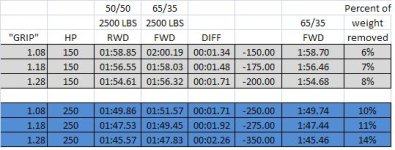7pg write up so everyone can understand the differences between the free version and pro version of LapSim
http://www.tuev-sued.de/uploads/images/1134742807425334568579/15_van_rutten.pdf
It's a very capable program but understanding limitations & assumptions are important.
Also correlating with your DL1 data can help improve your results.
http://www.tuev-sued.de/uploads/images/1134742807425334568579/15_van_rutten.pdf
It's a very capable program but understanding limitations & assumptions are important.
Also correlating with your DL1 data can help improve your results.



 LOL.
LOL. 